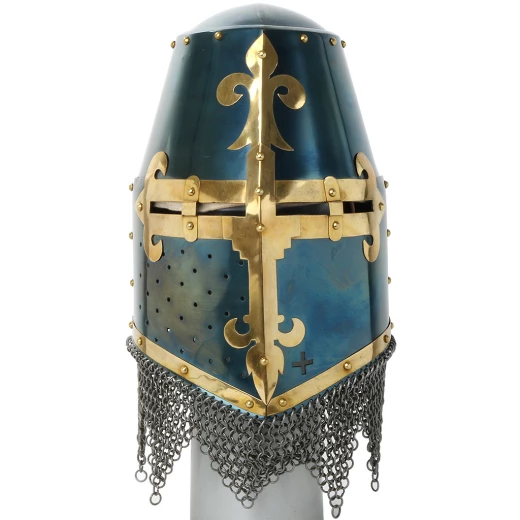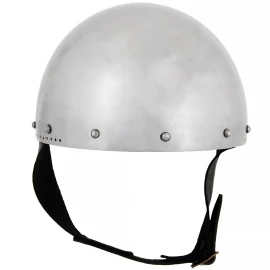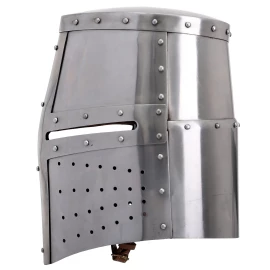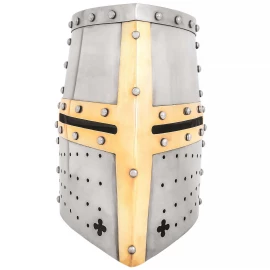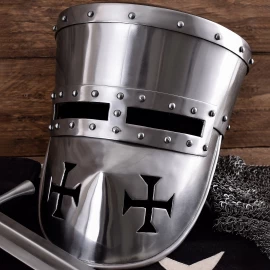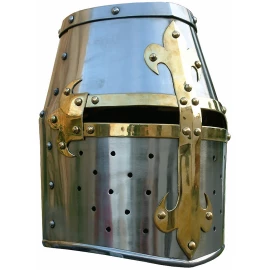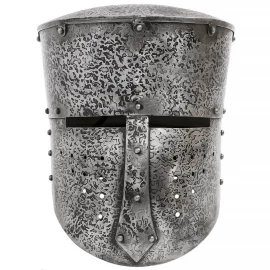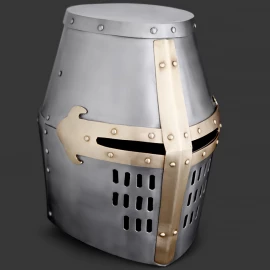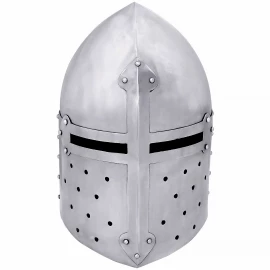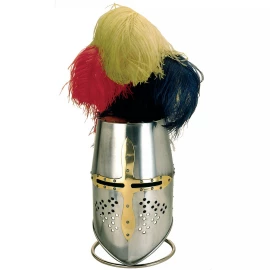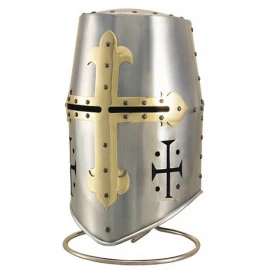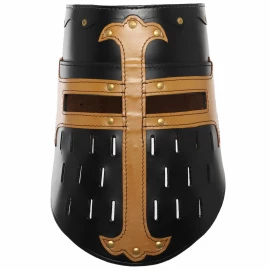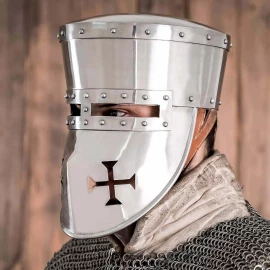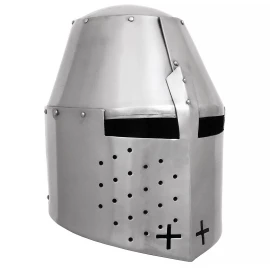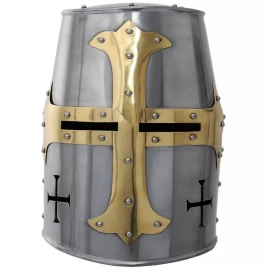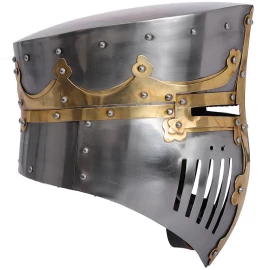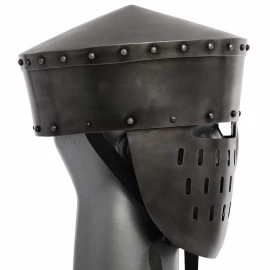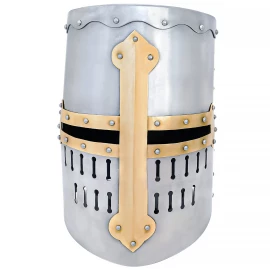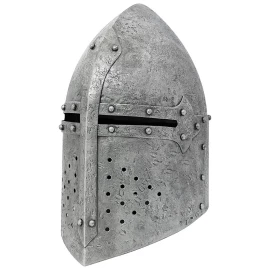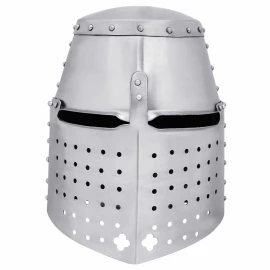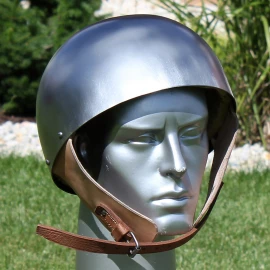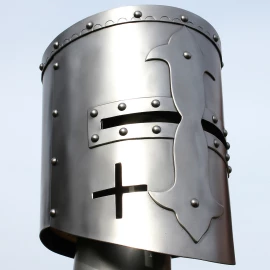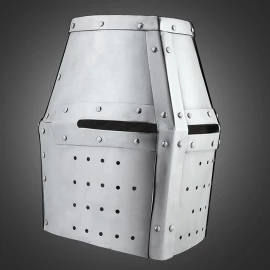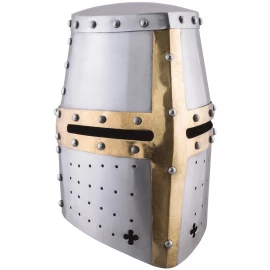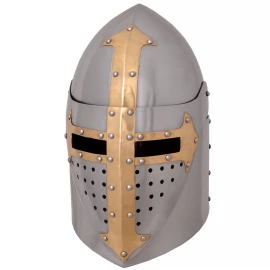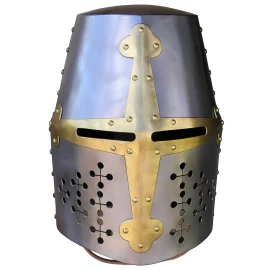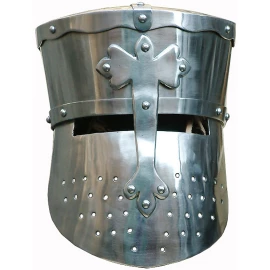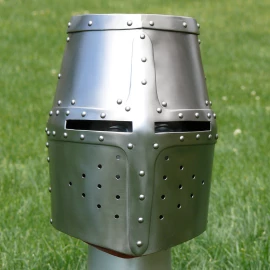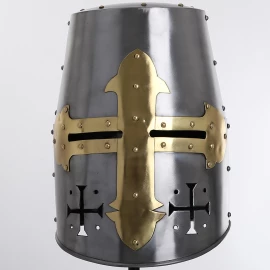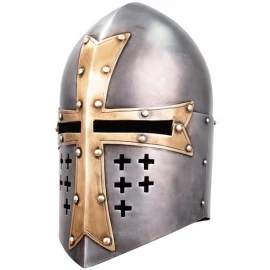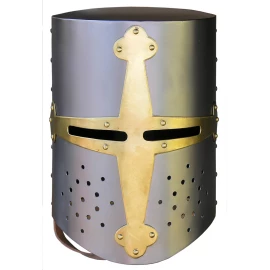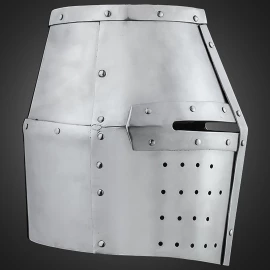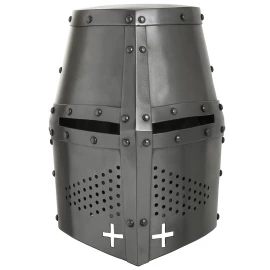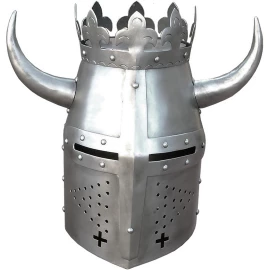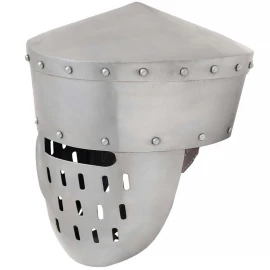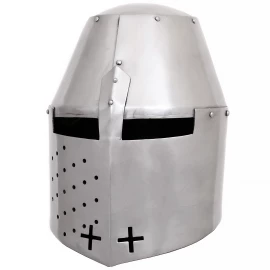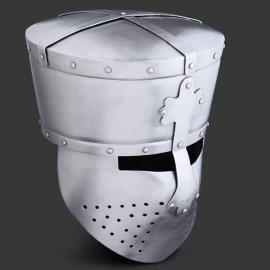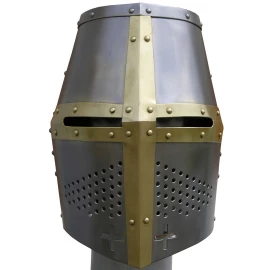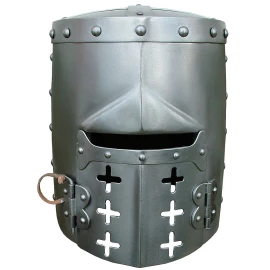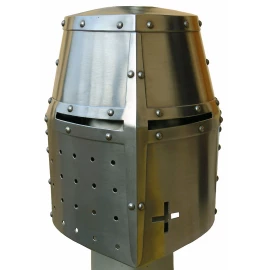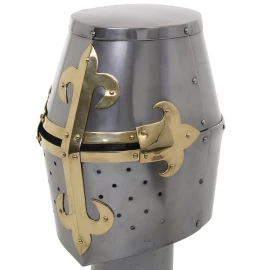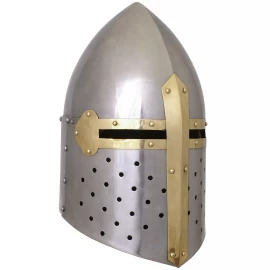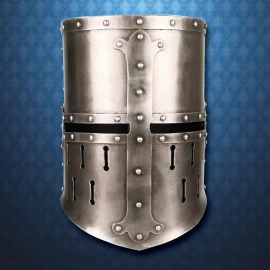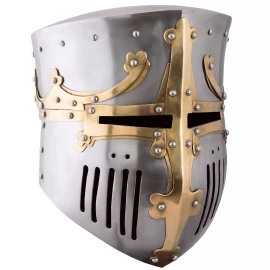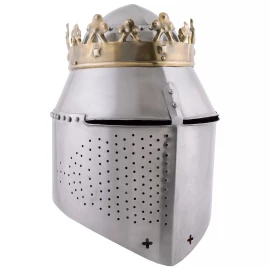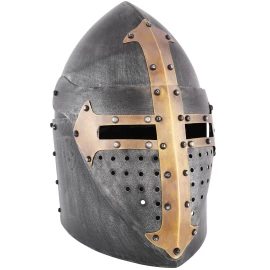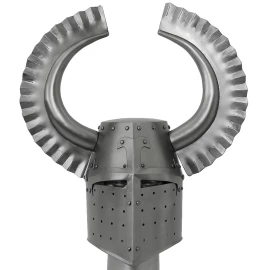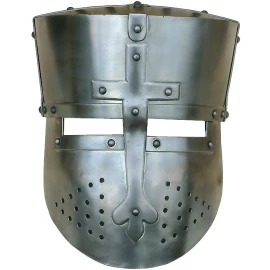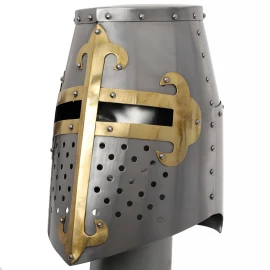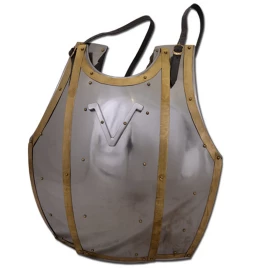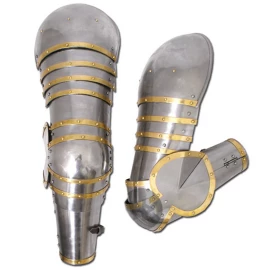Bucket Helm of the Knights of Kornburg
2xThis Bucket Helm is a replica of a late medieval funeral helmet of the “von Kornburg” family as it was found in the Church of all Saints in Kleinschwarzenlohe (Germany). The family of Rieter Kornburg (= knight of Kornburg) was a patrician family that resided since 1361 in Nuremberg. The helmet is dated to about the same time (about 1375) and was probably made by an armourer from Nuremberg. It is now on display in the Germanic National Museum in Nuremberg. Further product information ...
The following variants are currently available:
Bucket Helm of the Knights of Kornburg, Nuremberg about 1375
- Material: 1.6mm steel
- Aventail from non-riveted spring steel rings, inner diameter 8mm
- Delivery incl. padded fabric inlay with chin strap made of cowhide
- Finish: blued and lightly oiled
- Weight: about 3.4 kg
Our reconstruction is hand-hammered from 1.6mm thick steel plate. The steel parts are connected with brass rivets. The elaborate ornate brass mounts on the front are also riveted, howeve they are just painted on the original helmet. The helmet has an aventail from non-riveted spring steel, padded liner inside and a chin strap made of leather with brass buckle.
A high quality helmet for battle-from the home ULFBERTH®.
Size M:
- Head circumference: up to 62cm
- Longitudinal size (back of the head to forehead): approx. 22.5cm
- Cross size (ear to ear): approx. 19.0cm
- Height approx. 30cm
Size L:
- Head circumference: up to 64cm
- Longitudinal size (back of the head to forehead): approx. 23.5cm
- Cross size (ear to ear): approx. 19.5cm
- Height approx. 33cm
Although the great helm offered vastly superior protection than previous helmets, such as the nasal helm and spangenhelm, it limited the wearer's peripheral vision, and in addition to being heavy, the mass-produced form (flat-topped without ventilation holes) provided little ventilation and could quickly overheat in hot weather. Knights usually wore the great helm over a mail coif (hood) sometimes in conjunction with a close-fitting iron skull cap known as a cervelliere. The later development of the cervelliere, the bascinet, was also worn beneath the great helm; men-at-arms would often remove the great helm after the first clash of lances, for greater vision and freedom of movement in melee combat. The bascinet had a mail curtain attached, a camail or aventail, which superseded the coif. Mail throat and neck defences such as these were made obsolete when plate gorgets were introduced, around 1400.
We are here for you!


